This month we provide an update on the Hôpital de la Miséricorde and analyze controversial plans by Hydro-Québec to integrate an electricity substation into the haunted site. The ghost-ridden Hôpital de la Miséricorde has been empty for years and is starting to crumble. Located on prime real estate in Downtown Montreal...
Welcome to the thirty-sixth installment of the Haunted Montreal Blog!
After an unusually shaky start to the 2018 season, Haunted Montreal is pleased to announce that both the blog and our ghost tours are back on track! We are sorry to report that due to highly unforeseen circumstances, the company was put on hold for several months. We apologize for any inconvenience this may have caused.

The August, 2018 blog focuses on research we are carrying out a into a strange, Victorian ghost in the West Island suburb of Ste-Anne-de-Bellevue. She appears as a young teenager, dressed all in white, Victorian clothing. The adolescent spirit was spotted a few years ago walking quickly down the main street, bent at a strangle angle, by two visiting women. Strangely enough, nobody else saw her walking on the busy street.
Haunted Montreal is currently offering a public season ghost tours – in both English and French! Haunted Griffintown happens on Friday nights and Haunted Mountain on Saturday nights. Private tours are also available for groups of 10 or more people, including Haunted Downtown.
HAUNTED RESEARCH
Sainte-Anne-de-Bellevue is a sleepy suburb on the western tip of Montreal Island, featuring a quaint, waterfront village that is rumoured to be quite haunted. This is the story of an encounter between two visiting women and a mysterious ghost from the Victorian era.
Historically, for over 10,000 years, the area where Sainte-Anne-de-Bellevue exists today was frequented by both the Algonquin and Iroquois peoples. Situated at the rapids where two great rivers meet (today’s Ottawa and Saint Lawrence rivers), the Algonquin people referred to the area as “Tiotenactokte” (“place of the last encampments”) and that the Iroquois called it “Skanawetsy” (“white waters, after the rapids”).

When the French began colonizing the island in the mid-1600s, a Catholic parish was established in the area in 1663. About a decade later, King Louis XIV of France ordered the parish lands to be divided into seigneuries, or fiefdoms, for farming. One of these plots was granted to a man named Bellevue and the parish was later named in his memory.
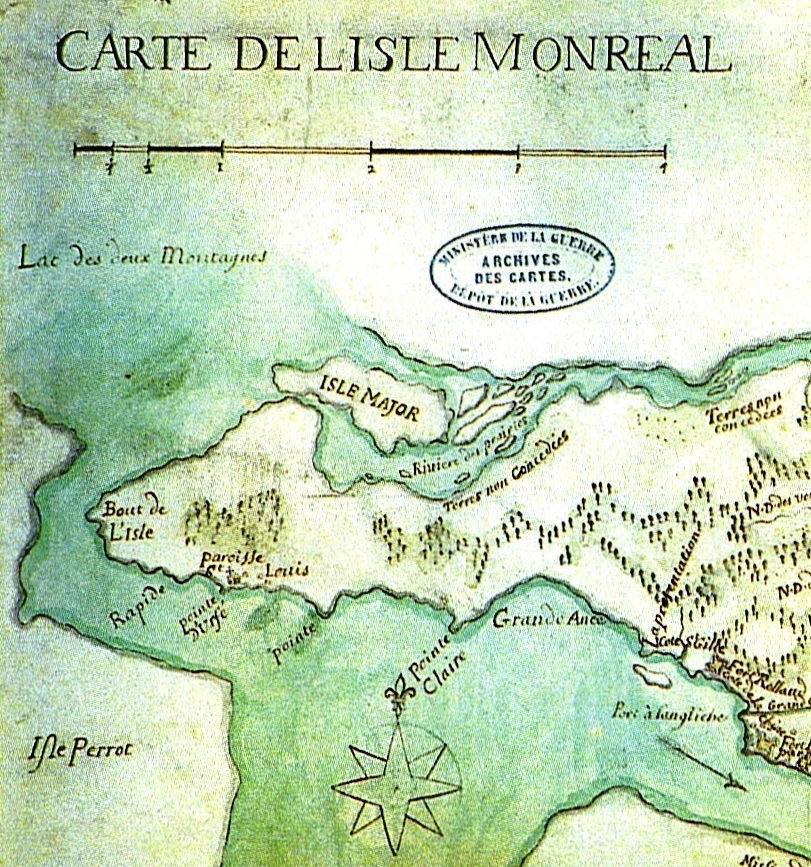
The name Sainte-Anne was added later based on a remarkable story. According to the municipality’s website:
“In about 1712, returning from a nightly visit to the sick, Abbot de Breslay was caught in a severe snowstorm. His spooked horse went astray and threw its rider on the ice. Despite this unfortunate incident, a broken leg and no rescue to rely on, he vowed to build a chapel dedicated to St. Anne. When he regained consciousness, he was astounded to find himself in his bed unaware how he had gotten there. From then on, he hastened to make every effort to fulfill his promise, and soon after, the first church known as Sainte-Anne was built close to the shore.”
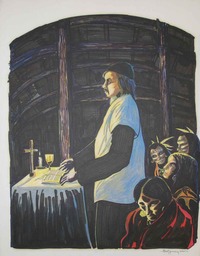
The village of Sainte-Anne-de-Bellevue sprung up around the church and became an important river port during the days of New France, as the last stop for fur traders heading off into the wilderness. Following the British Conquest of 1760, its importance continued with the timber trade, as great rafts of logs were floated downriver towards Montreal island.
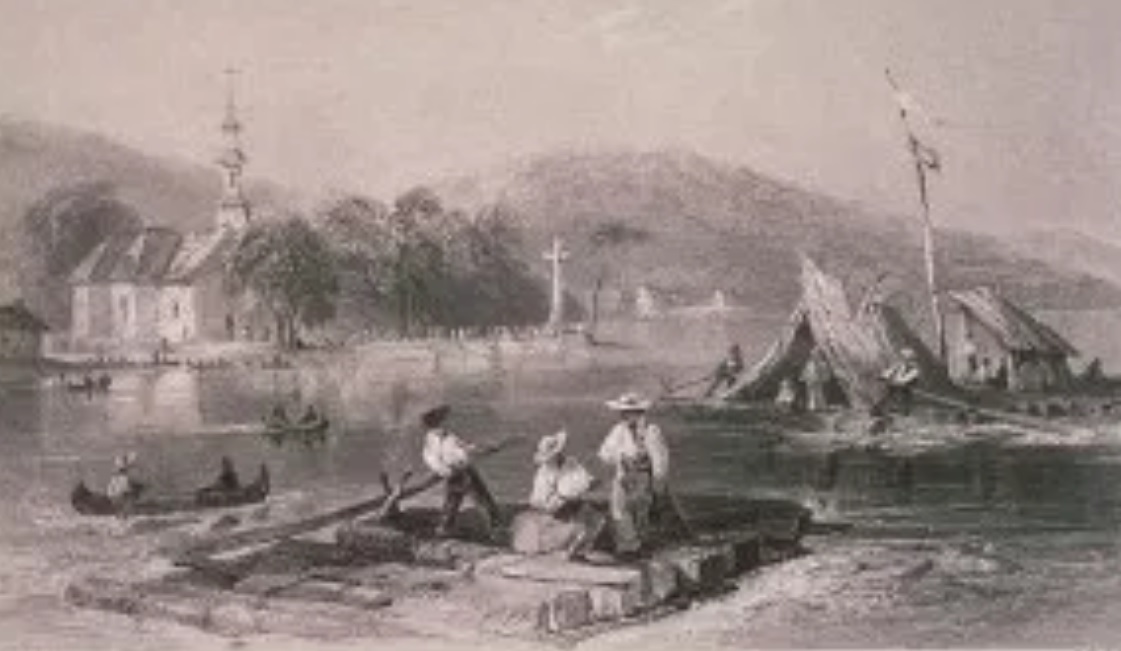
The village was incorporated during the Victorian era, on April 18th, 1878. It has grown slowly into a suburb since then.
Today, despite having a population of just over 5000 people, the municipality seems busier due to the presence of numerous students from John Abbott College and the MacDonald Campus of McGill University.
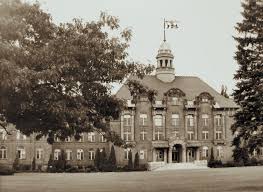
Sainte Anne’s, as it is affectionately known, is also a popular place with tourists and locals from surrounding areas, who enjoy its lively village and beautiful river views. It also has a reputation as being haunted, with several ghostly encounters that have taken place there.
According to Cold Spot Paranormal Research, an organization run by Michelle McKay that specializes in ghost investigations, a woman named Meema contacted her on March 12, 2014 to file a report about a strange, paranormal experience on the main street of Sainte-Anne’s village.

In the summer of 2012, Meema was visiting Sainte Anne’s village with her friend Brigitte, a tourist and ballet mistress from France. They were enjoying the small, quaint shops and narrow side streets – a welcome escape from the bustle of Montreal. Meema had only praise for the beautiful old village, writing that they felt as though they had “escaped for a holiday to Cape Cod.”
However, as they were enjoying their leisurely excursion, it was suddenly interrupted after they emerged from a second-hand book shop on the main street.
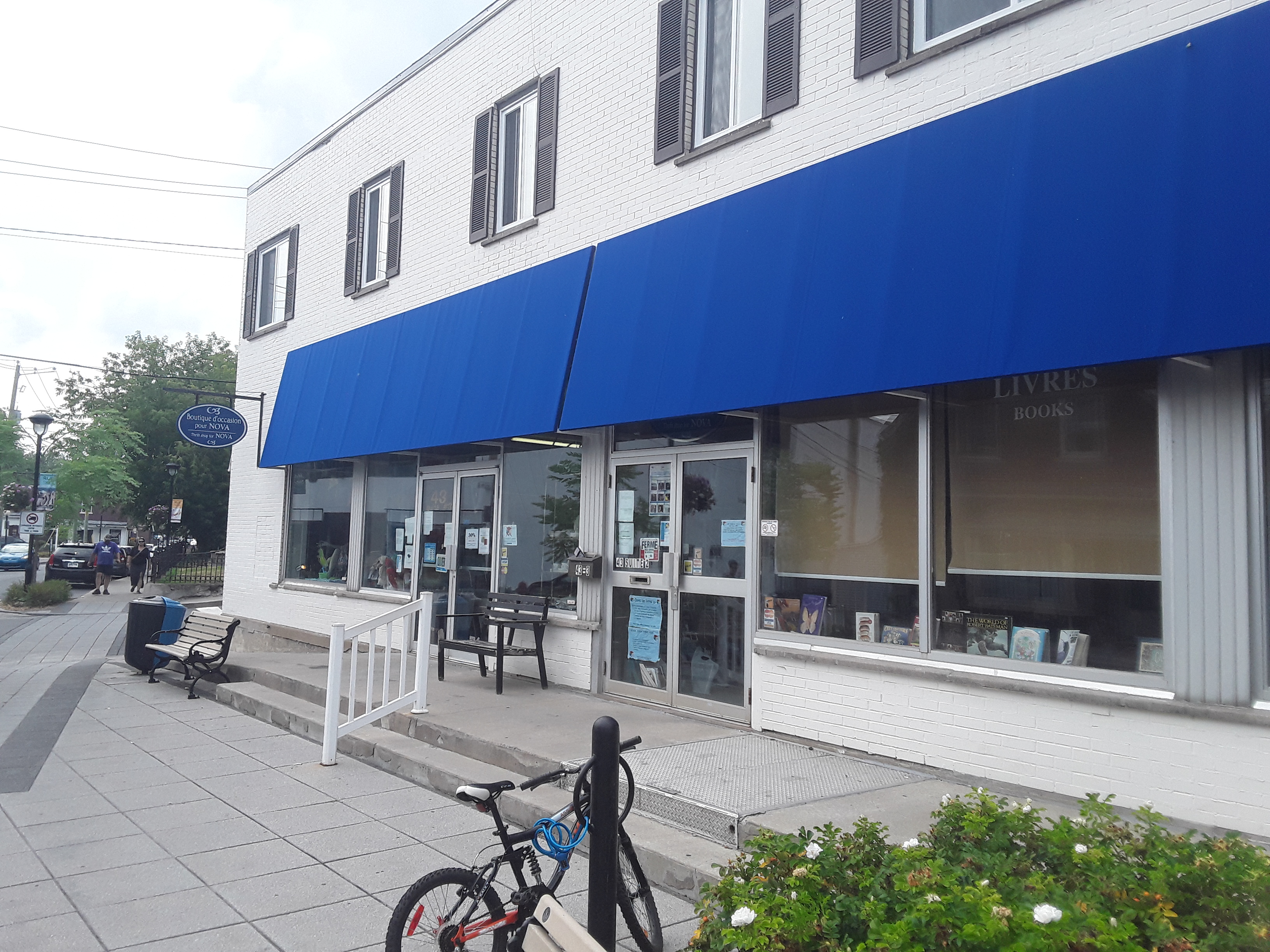
Just as they were about to cross the road, they felt something strange behind them. Glancing back instinctively, both women witnessed a startling sight. In an interview with Haunted Montreal, Meema explained:
“It was a young girl, perhaps around ten or eleven, dressed completely in white – from the ribbons in her hair to the dress, which had a very old-fashioned appearance, white gloves, white socks or stockings, white shoes, and an almost blue coolness around her. She was bent forwards at a strange angle. She had a very determined outlook, as though she was being forced to walk by someone who was threatening her, if this makes sense. It was so out of place on a sunny Saturday afternoon in the summer. She walked quite fast, and was heading towards the bridge to take you off-island, and Brigitte and I watched her until she was completely out of sight. The dress was not of this day and age, and at first we thought it to be some sort of fancy dress day for a party perhaps.”

Perturbed, Meema continued: “The uncanny thing was that as she walked past quite a few people wandering the sidewalk in either direction, none seemed to remark on her, or turn back to do a double-take. Her hands and arms were straight, I do remember, stiff by the sides of her body. We stood there watching, still thinking how very eerie it was – we’re both pretty pragmatic people, Brigitte and myself, but to see her stride in such a fast and determined way, really meaning business, seemed out of place, and the fact that no one took notice at all was of concern.”
Meema’s car was parked across from the second-hand bookstore.
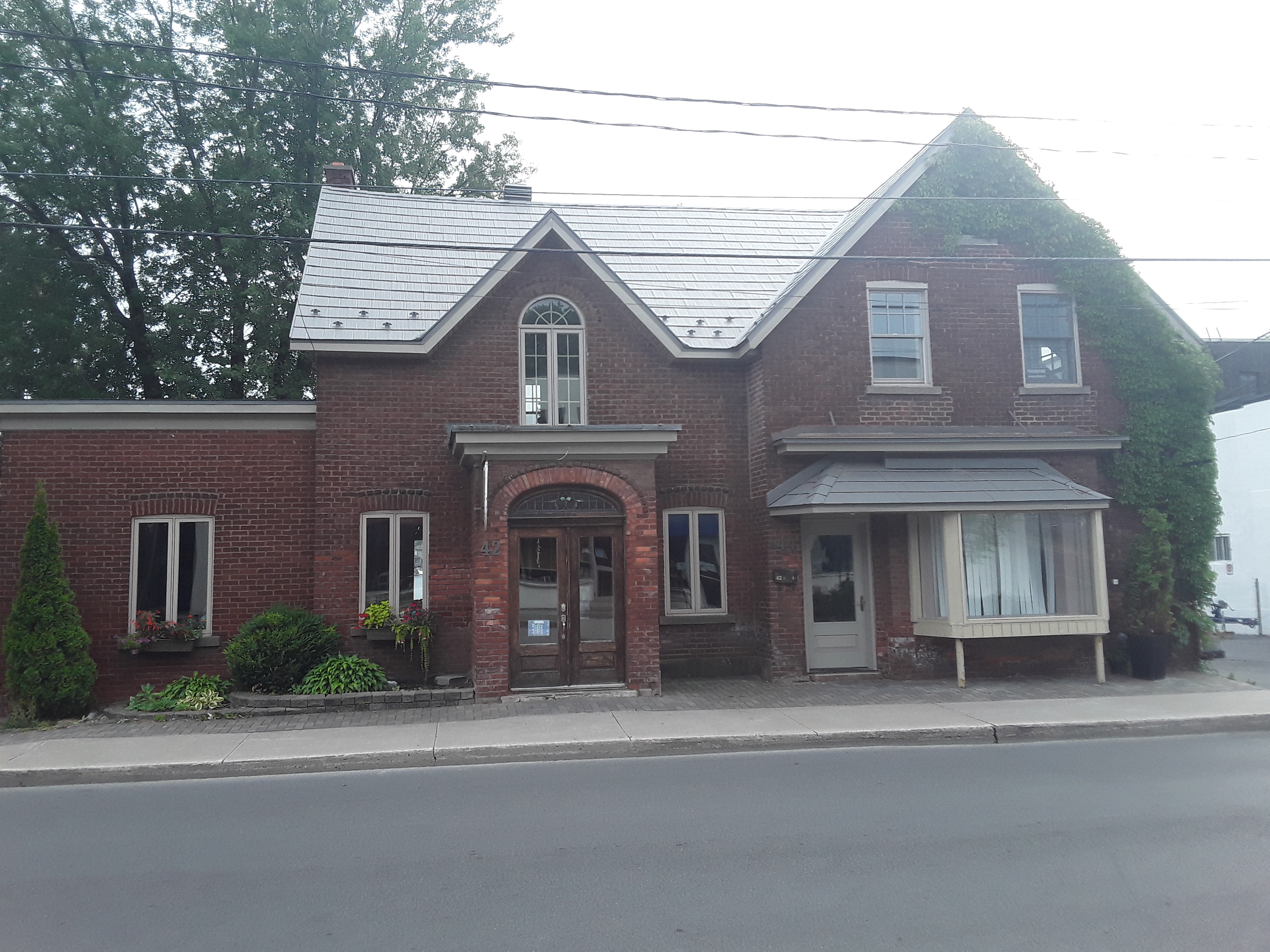
They both got into the vehicle and began driving eastwards on the Lakeshore Road, towards the City of Montreal proper. About 90 seconds into the drive, they were both startled once again when they saw the same ghostly Victorian girl near a 211 bus stop at John Abbott College.
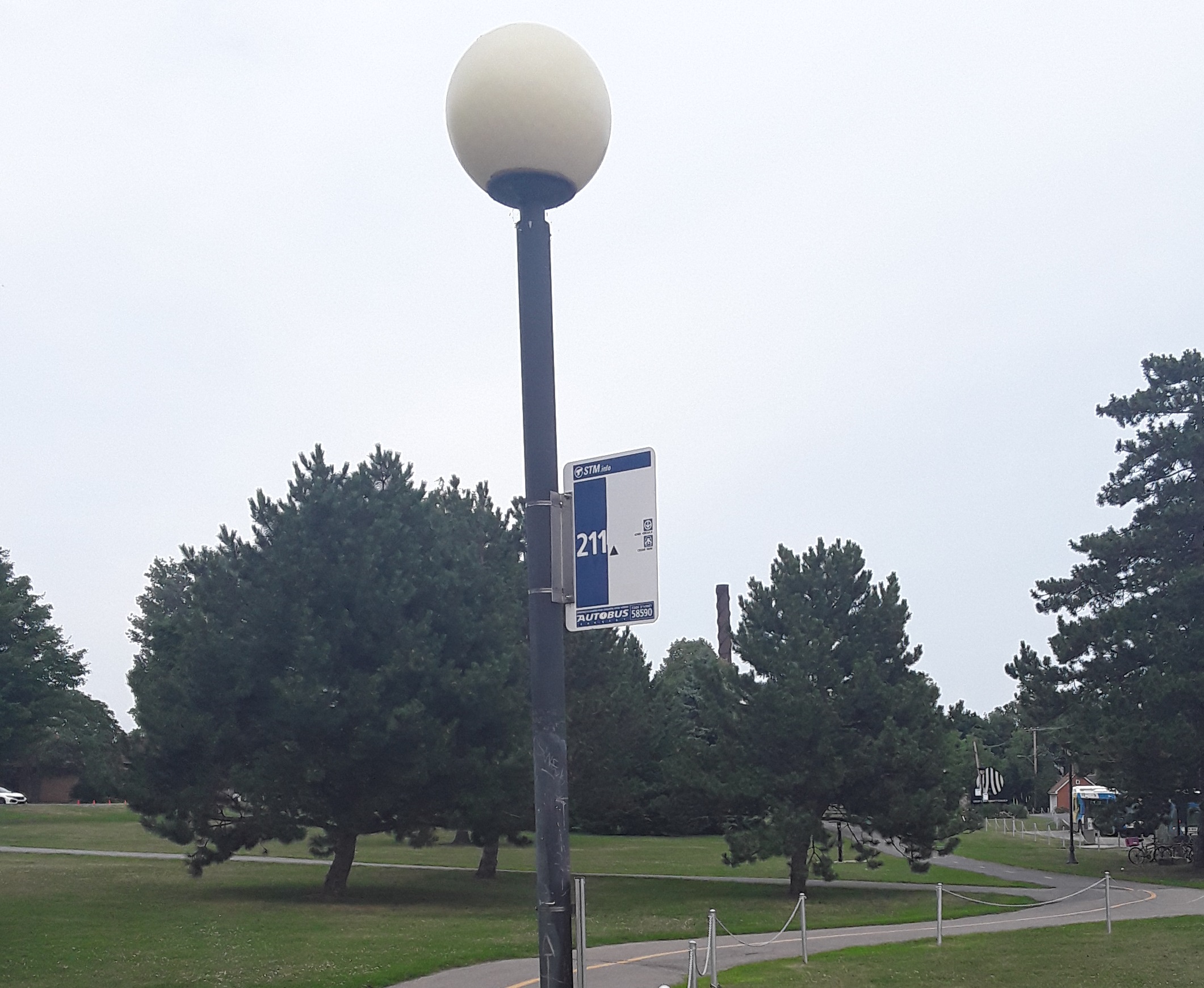
Meema explained:
“We gasped because there she was, waiting on the edge of the curb, facing in the same direction, ready to begin this walk all over again. There was absolutely no way she could have returned in that time from where she’d disappeared from view, truly. We thought of twins playing a joke perhaps, a psychology experiment from John Abbott, an explanation, but somehow, it felt wrong, wrong. Her upper body was also bent at that strange angle, possibly around 70 degrees. Teenage boys, lolling at the bus stop, appeared not to see her either. I had to drive on because of traffic behind me, but we could not make sense of what we saw that day. We never forgot this experience, and cannot explain it at all.”
When asked who she thought the ghost might be, Meema replied: “I looked up the history of Ste-Anne’s and saw that there were religious buildings around in the 1850s or so. I spoke to my husband about it. He wondered if her dress indicated some sort of religious attire, possibly someone from the past in confirmation clothing. I can’t think of any reason as to why she re-appeared, other than she was bound to walk the walk.”
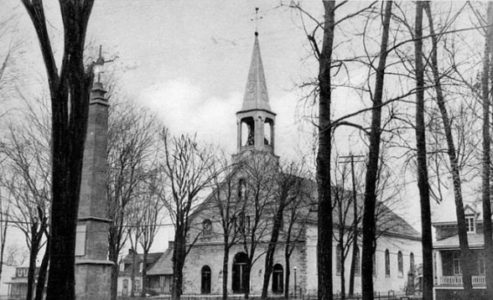
Meema knew she would likely never forget her uncanny experience with the Victorian ghost of Ste-Anne-de-Bellevue. She explained: “I’m not in the habit of seeing things that aren’t there and always go for the practical realistic line of explanation. This one, on reflection as I write, is still and always will be, a puzzle. It was “out of place”, whatever it was.”
For posterity, she decided to submit her report to Cold Spot Paranormal Research and concluded her strange report with a reflection:
“A good friend of mine was interested in these experiences, and suggested that if it happens again, to say in my mind “Go to the Light”. It won’t hurt. I shall do just that. But the first experience was shared by two of us, and I honestly don’t understand what we were seeing. The girl in white looked solid and substantial. And I honestly don’t feel like having another episode at any time in the future. And I do not understand what we have seen, and would like to know.”
Who the ghost might be and whether or not anyone else has spotted her remains unknown at this time. Only one thing is certain: the Victorian ghost of Ste-Anne-de-Bellevue is but one spirit in a cast of hundreds of apparitions that haunt the Montreal island and region.
COMPANY NEWS
After a rough start to the 2018 season, Haunted Montreal is pleased to announce that both the blog and our ghost tours are back on track! The company was put on hold for several months, so there are no blogs for April, May, June and July of 2018. We apologize for any inconvenience this may have caused our clients and readership.
As announced on Friday the 13th in July, Haunted Montreal is now offering a public season ghost tours – in both English and French!
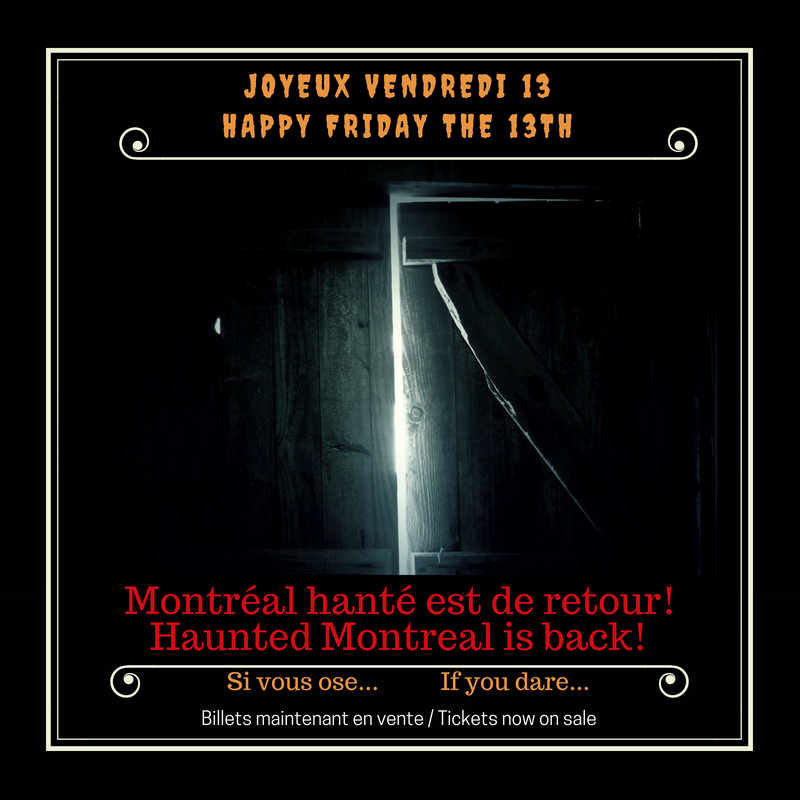
Haunted Griffintown happens on Friday nights and Haunted Mountain on Saturday nights. Private tours are also available for groups of 10 or more people, including Haunted Downtown.
The talented Caitie Moynan in now in charge of administration and we have switched to the Eventbrite system for ticketing.
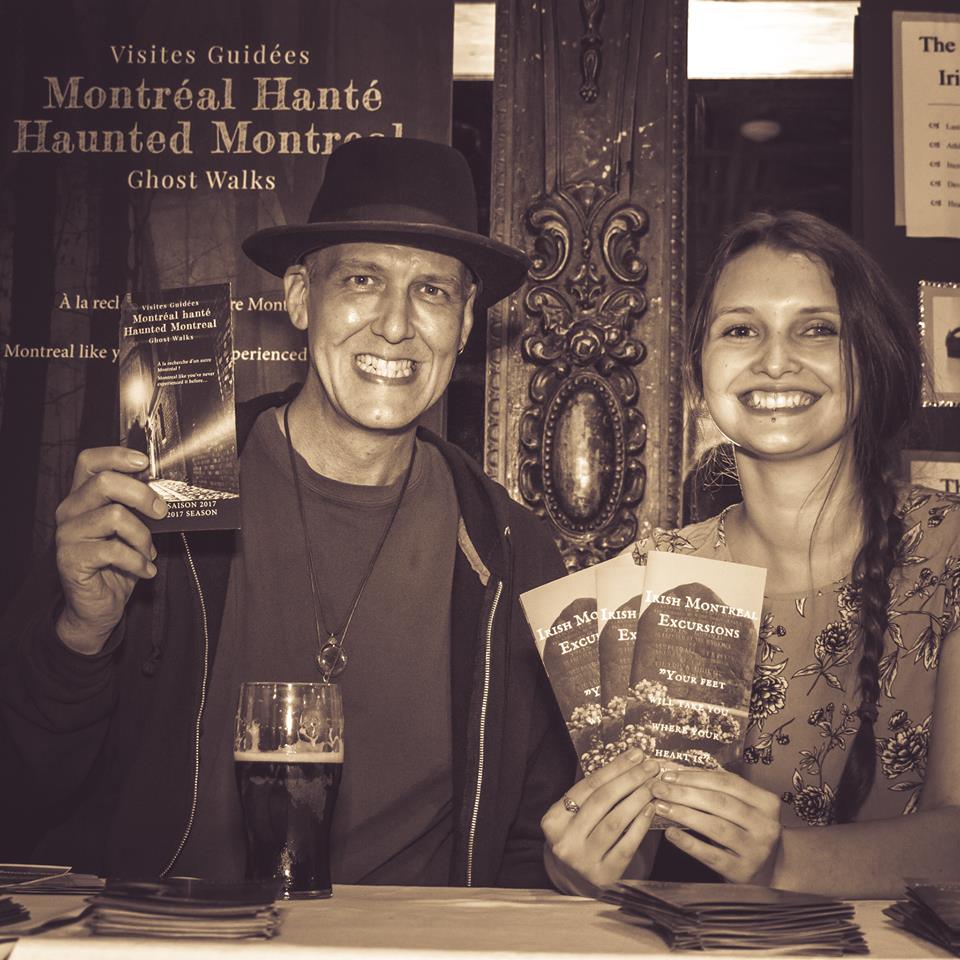
Haunted Montreal would also like to thank all of our clients who attended a ghost walk during the 2017 season! If you enjoyed the experience, we encourage you to write a review on our Tripadvisor page, something that helps Haunted Montreal to market its tours. Lastly, if you would like to receive the Haunted Montreal Blog on the 13th of every month, please sign up to our mailing list.
Coming up on September 13: The Phantom Calèche
Since the 18th Century, horse-drawn carriages, also known as calèches, have been ferrying tourists around Montreal to take in the sights and attractions. Those driving the carriages are a cast of colorful characters who have a long history of unveiling some of Montreal’s most unusual and darkest secrets. This long-enjoyed tourist tradition is about to come to an end in 2020, on orders of Montreal’s new mayor, Valerie Plante. While most people believe her decision was influenced by animal rights activists, a few speculate that she decided to ban them due to one particular reason: a paranormal carriage known only as the Phantom Calèche was putting tourists in serious danger.
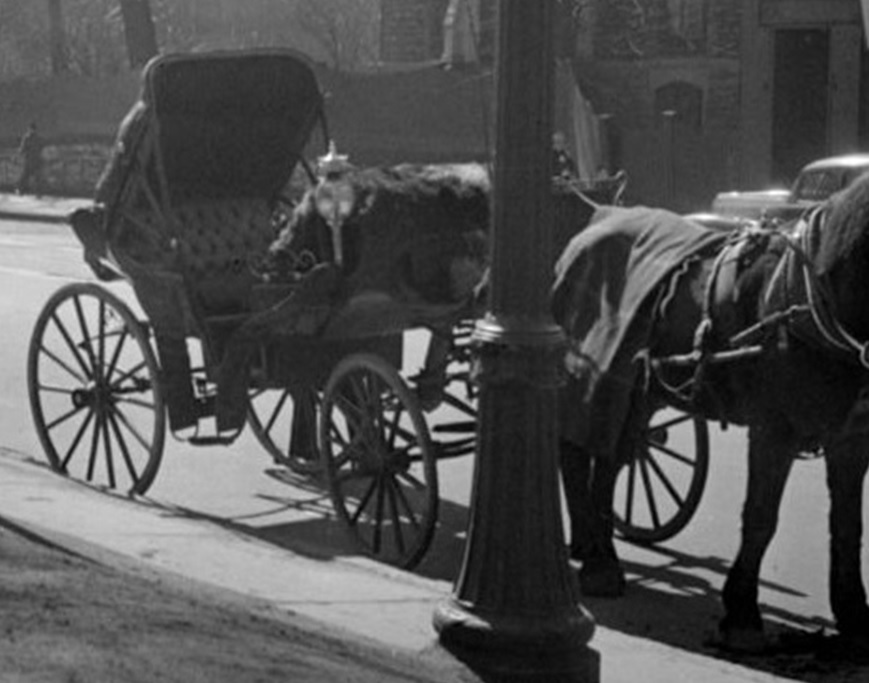
Donovan King is a historian, teacher, tour guide and professional actor. As the founder of Haunted Montreal, he combines his skills to create the best possible Montreal ghost stories, in both writing and theatrical performance. King holds a DEC (Professional Theatre Acting, John Abbot College), BFA (Drama-in-Education, Concordia), B.Ed (History and English Teaching, McGill), MFA (Theatre Studies, University of Calgary) and ACS (Montreal Tourist Guide, Institut de tourisme et d’hôtellerie du Québec).




Terrific story — thanks! I’m glad you’re fully in the swing of things again and hope I can do one of your tours soon. Keep up the great work.
Thank you Judy! Your kind words are most appreciated!